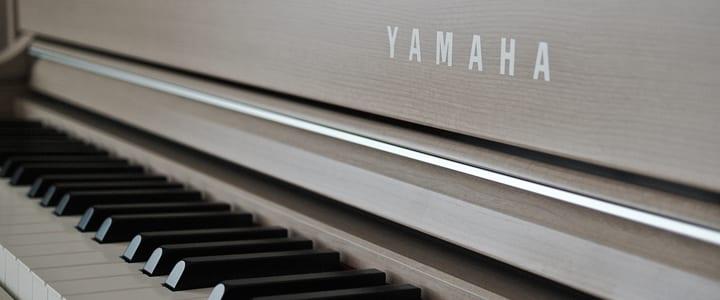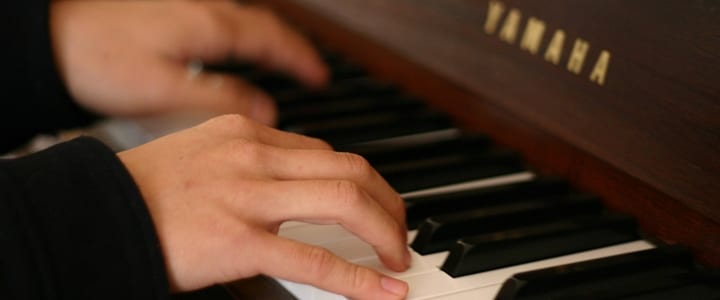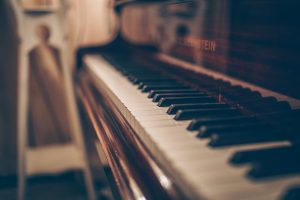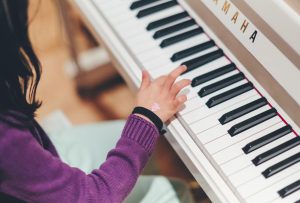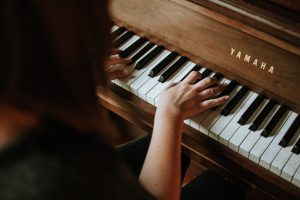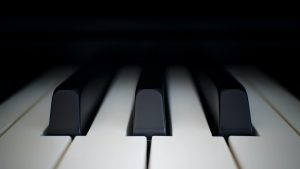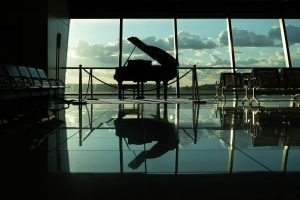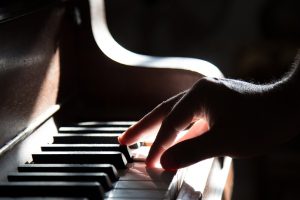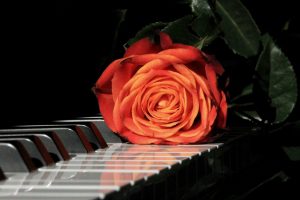Getting ready to buy your first piano, but not sure which manufacturer to look into? Here, St. Augustine, FL teacher Heather L. shares a bit about two of the best piano brands…
Whether you’re a new piano player or an expert, you’re likely wondering, “what are the best piano brands?”
The short answer is that…there is no answer! There are lots of pianos out there but the best piano brands for you might not be the same as they are for another pianist. Lots of factors need to be taken into consideration.
As a piano teacher, two of the first questions that I get from parents of my piano students are “What kind of piano should I get?” and “What are the best piano brands?” The facts of the matter are that our modern piano is a 19th century invention about which many people, even pianists, don’t know a lot about, and the current piano manufacturing industry is always changing.
For many families, it’s one of the larger purchases that you’ll ever make for your home. It’s important to devote the same kind of careful research that you’d give to any big buy.
So what is the best piano brand? Here’s an overview of some of the best upright piano brands, grand piano brands, keyboard brands, and more – as well as a side-by-side comparison of two of the most popular (and my most favorite!) piano brands of all time.
What Are the Best Piano Brands for Beginners?
If you’re new to playing piano, you should start with an inexpensive piano (sometimes a digital piano keyboard is the best choice) until you know that you plan on sticking with the piano long-term to make the investment worth it. Here are the best piano brands for beginners:
- Casio CT-S1 61-Key Portable Keyboard
- Alesis Melody 61 MKII Music Keyboard
- Lagrima 88 Key
- Alesis Recital
- Donner DEP-10 Beginner Digital Piano
- Yamaha P-45 Keyboard
- Casio SA76
Of course, you don’t have to choose a digital piano or keyboard if you aren’t interested in a budget pick. There are plenty of other top contenders. We’ll take a deeper dive in this post.
As you’re mulling your options, be sure to keep practicing. Without having a good grasp of the basics of piano, it doesn’t matter what kind of piano you have. Here’s a video that can help you recall the importance of piano chord basics:
Best Piano Keyboard Brands
As we mentioned earlier, choosing from the best digital piano brands is a smart choice if you’re new to playing the piano. Baby grand and upright pianos can be extremely expensive – sometimes in excess of $15,000! A keyboard costs much less, usually just a few hundred dollars.
That said, when you’re shopping for a keyboard, it can be challenging to find the right one. These are about form and function and less about quality sound. Although playing on a keyboard can help you develop finger function and technique, you won’t get quite the same experience as you would on a baby grand.
Here are some of the best piano keyboard brands to consider if you’re looking for an easy and affordable introduction into the world of pianos.
1. Yamaha
We will go into more detail on why you should consider Yamaha as a top brand later in this article.
For now, know that Yamaha is at the top of the list for all kinds of musical instruments (not just pianos).
As a Japanese company, these digital pianos are made in massive factories in Asia before being exported all around the world.
The company also makes acoustic pianos (like uprights and grands) that are used in schools and concert halls. They have a strong background in music technology to create quality products along with a generous warranty on most products.
2. Kawai
Another one of the best piano brands that we’ll go into more detail on later is Kawai. Founded in 1927, this company is headquartered in Japan.
The brand has a range of digital customization features on its pianos, offering powerful output that doesn’t compromise sound quality.
3. Casio
Casio is another major Japanese piano brand. Although this company is best known for products like cameras and watches, it also makes lightweight, compact, and affordable piano keyboards.
Geared toward beginners, these keyboards still have impressive technology with all kinds of features like multi-speaker acoustic sound simulation. Plus, the hybrid key action on these closely resembles what you’d get on an acoustic grand.
Oh – and the keys are made of real wood, not plastic.
4. Roland
Roland is a manufacturer that focuses solely on music. A Japanese company, these keyboards are built to last and have a 10-year warranty. The keys are made out of real wood and feel like ivory.
It’s also worth noting that the pedal system is reprogrammable to different functions and weights, something you won’t find on just every piano keyboard.
These pianos are expensive, though, so bring your checkbook.
5. Korg
Formerly known as Keio Electronic Laboratories, this digital-only piano producer also makes recording equipment, pedals, synthesizer, and even guitars.
The pianos are synthesizer-heavy, offering a lot of technological features with a solid sound quality. They are known for being less expensive and more compact than many competitors.
Best Upright Piano Brands
If you’ve been playing piano for a while, you might be interested in an upright piano. Although these aren’t as famous or luxurious looking as grands or baby grands, they take up significantly less floor space and offer a quality sound.
They are commonly lumped into the same category, but there are actually four types of vertical (non- grand or baby grand) pianos out there. These include spinets, consoles, studios, and of course, uprights. The only difference is the height, with upright pianos being the tallest.
Here are the best upright piano brands to consider.
1. Bechstein
Bechstein pianos are listed at the top of almost every single best piano brands’ list. These pianos have sophisticated and optimized sound development and are played by some of the most famous musical artists in the world – including the Beatles!
They come with a five-year warranty and a significantly lower price tag than many other upright pianos.
2. August Forster
These pianos are on the larger size, but if you commit to an August Forster, you’re committing to a quality instrument.
It offers superb tonal qualities and a sound that’s like a grand piano without taking up quite as much space. Made of quality materials with excellent workmanship these pianos have extra-thick side panels and a warm, deep bass tone that mimics that of a grand.
3. Grotrian
Grotrian pianos are known for the treble’s sustaining characteristics and powerful bass.
Offering a unique and expressive sound, these pianos have clear tons and the pianos themselves have gorgeous sculptural qualities.
There are lots of models and designs to choose from, including ebony, walnut, and white Concertinos and Classic Models.
4. Sauter
Sauter is not an enormous brand with its factory producing less than 1000 pianos each year.
Nevertheless, this German company is one to remember. It has a warm, lush, bell-like sound along with unique features like a tongue-added spring on the jack. These features give the uprights a sound quality that is similar to that of a baby grand.
This brand is also known for its unique design options. Some have a veneer of greenish glass covering the front of the cabinet while others serve as more sophisticated additions to homes and apartments with contemporary or mid-century modern design schemes.
5. Schimmel
Last but not least is Schimmel. This is one of the world’s most famous piano makers, with a main headquarters in Germany.
A pioneer in the use of CAD design and manufacturing, this piano brand combines technology with hand craftsmanship for a truly remarkable finished product.
There is a classic ebony black upright piano along with many other modern decorative pianos you can choose from.
Best Grand Piano Brands
Next on our list is the best baby grand piano brands. You’ll find that some of these are repeats from those listed above. That’s because many baby grand or grand piano manufacturers have gone on to produce smaller, more affordable models like uprights and keyboards for customers who just don’t have the space (or checking account) to accommodate a grand or baby grand.
One quick note of clarification as yours hopping around. A grand and baby grand are similar types of pianos and offered by most of the same manufacturers – but they are not one and the same.
A grand piano is longer than a baby grand. Although this doesn’t mean much in terms of sound quality, there is a slight difference, with grand pianos producing a more voluminous sound without the sharper overtones of a baby grand.
Just a few things to keep in mind!
With that said, some of the best grand piano brands include:
- Steinway & Sons
- Yamaha
- Kawai
- Mason & Hamlin
- Fazioli
- Bechstein
- Bösendorfer
- Baldwin
- Blüthner
- Steingraeber & Söhne
- Grotrian-Steinweg
You can find more information about most of these piano brands here. Consider adding these best piano brands to your list as you are shopping around!
Best Used Piano Brands
Whether you’re looking for some of the best antique piano brands or some of the best upright piano brands, used pianos certainly have their place in the marketplace. Buying a used piano is a great choice if you’re on a budget but still want to go home with a quality pick.
My advice? Have someone who is a skilled pianist go with you to look at the used piano you’re thinking of buying. That way, you will know you’re getting a quality pick for your money.
Otherwise, look for quality brands such as:
- Yamaha
- Kawai
- Steinway
- Mason & Hamlin
- Sohmer
- Young Chang
- Samick
The newer the better, unless you find a piano that has had some quality refinishing.
If you’re looking for piano brands to avoid, you may want to cross brands like these off the list:
- Bradbury
- Betsy Ross
- Currier
- Belarus
- Suzuki
- Tokai
- Poole
- Marantz
They might be okay if they’re reconditioned, but a lot of pianists have had problems with them.
Kawai vs. Yamaha – Two Top Piano Brands Compared
When you’re trying to find the best piano brands, it can often be helpful to consider a side-by-side comparison of two famous companies. I’m often asked about Kawai and Yamaha pianos, which are two of the best upright piano brands.
Two of the biggest and brightest stars in the piano world right now are Kawai and Yamaha. So in a battle of Kawai versus Yamaha, who makes better pianos?
Here’s a comparison of the two.
Should I Buy a Kawai Piano? Pros and Cons
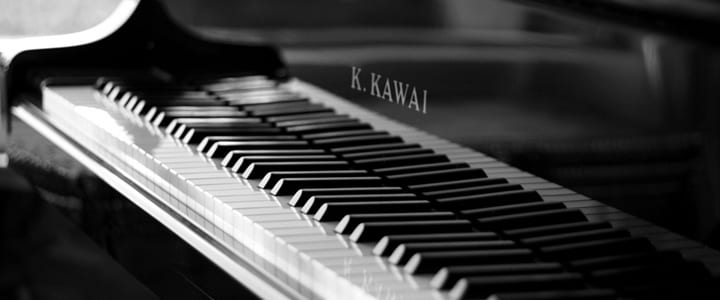
Kawai, as a company, has long spoken out in favor of building pianos with plastic and composite materials, instead of wood, which inherently changes the texture, tone, and touch when played. Kawai also boasts a longer key than is found on most pianos, including Yamaha’s.
Their claim is that this aids pianists in the performance of passages requiring great dexterity, in other words, passages with lots of ornamentation or especially fast-moving measures. Unfortunately, though, Kawai’s tone sounds especially dead, metallic, and dark to me. The sound is so utterly clean that in a way it reminds me of a toy piano.
Should I Buy a Yamaha Piano? Pros and Cons
Yamaha is known for having a distinctly bright tone, and I think it’s true. It’s so distinct, in fact, that I think that I could pick out a Yamaha piano out of several played if I were blindfolded. The sound, however bright, is still full and well-rounded.
Neither Kawai nor Yamaha, as with many pianos made in Asia, possess the kind of warmth that we hear from pianos made elsewhere. But some of Yamaha’s newer models actually sound a little warmer in the treble section of the keys than Kawai’s.
Yamaha’s action (the way that the key respond to pressing) and sustain (how long tones last) are noticeably better.
How to Find the Best Piano Brands
When you’re shopping for the best piano brands for your needs, skill level, and budget, it can be hard to find the right make and model. Knowing where to look for quality information is essential. Fortunately, in addition to all the resources here at TakeLessons.com, there are also plenty of other online resources you can tap into for help.
ThePianoBuyer.com is a great place to start before making your purchase.
You can also visit a piano store, play both Kawai and Yamaha pianos, and decide for yourself which sound is more appealing.
In my opinion, the best way to find the perfect piano for yourself is to ask your piano teacher. If you aren’t already taking piano lessons, now is a good time to start. An experienced piano teacher will be able to give you their recommendations.
In the end, as a piano teacher and parent myself, my final and most important factor in choosing between two piano brands (or two brands of almost anything) is durability.
For many of us, pianos come into our homes as part of a long-term plan to be passed down to future generations. For this reason, I believe that Yamaha is the builder of more solidly constructed and longer-lasting instruments. Many institutions, schools, and performing artists favor Yamaha for this very reason. Perhaps you should consider it, too.
 Heather L. teaches singing, piano, acting, and more in St. Augustine, FL, as well as through online lessons. She is a graduate of the prestigious Westminster Choir College in Princeton, New Jersey, and has performed with the New York and Royal Philharmonics, the New Jersey and Virginia Symphonies, the American Boy Choir, and the internationally renowned opera star Andrea Bocelli. Learn more about Heather here!
Heather L. teaches singing, piano, acting, and more in St. Augustine, FL, as well as through online lessons. She is a graduate of the prestigious Westminster Choir College in Princeton, New Jersey, and has performed with the New York and Royal Philharmonics, the New Jersey and Virginia Symphonies, the American Boy Choir, and the internationally renowned opera star Andrea Bocelli. Learn more about Heather here!
Photo by DieselDemon, MIKI Yoshihito, Joann Wan
Suzy S.
